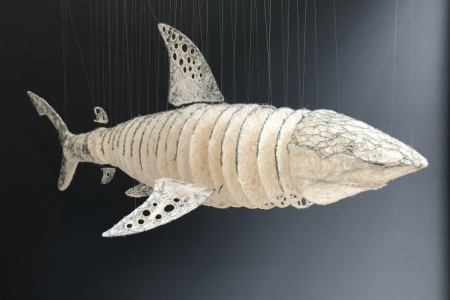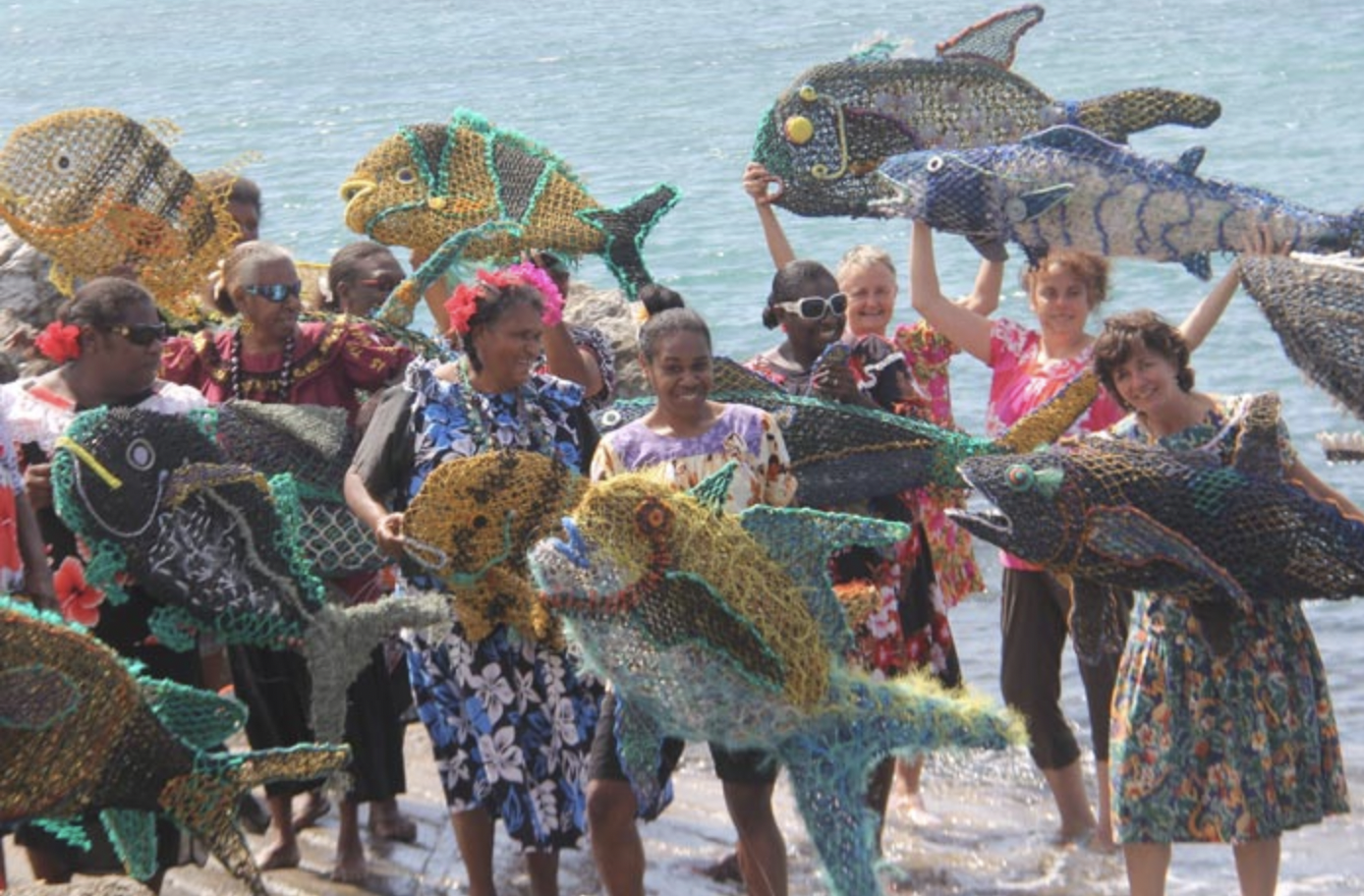
Beizam

Ghost nets are fishing nets that have been accidentally lost, abandoned or simply thrown overboard. They travel the oceans carried along by ocean currents and tides, continuing to trap marine wildlife. They're called ghost nets because it's as if they're still fishing, manipulated by invisible hands. They trap many marine creatures and fish until they are washed ashore. They can also cling to reefs, destroying coral. Sometimes, when they finally wash up on beaches, the high tide brings them back into the open sea, where they continue their peregrinations. These ghost nets are a very big problem, particularly at the northern tip of Australia and in the Gulf of Carpentaria, where they also disrupt the lives of the Aboriginal communities there, whose cultures and lives are intrinsically linked to the sea - they are known as the "sea water people".
As part of "Design for a Sea Change", artists at the Hammond Island Art Centre in Queensland's Torres Strait were the first to come up with the idea of using discarded fishing nets to create bags for sale. This initiative attracted the attention of a patron who decided in 2008 to encourage the Aborigines living on Queensland's north coast to create works from these nets, in order to safeguard the marine fauna, but also to enable the artists to use a new medium that would not be transported to them by land, but which they could collect themselves, just as their ancestors did with materials found in their immediate environment.
This new medium was first proposed to the artists of the Aurukun community, as these men and women specialized in weaving works that they had previously produced using plant fibers. The artists were enthusiastic about this material, which has the advantage of being very colorful. Since then, artists from as far afield as the Torres Strait and as far west as Arnhem Land have joined the movement, competing with each other in their inventions.
The project has raised awareness among the Australian public of the serious environmental problems caused by ghost nets. Works made from ghost nets are now part of the collections of public institutions.